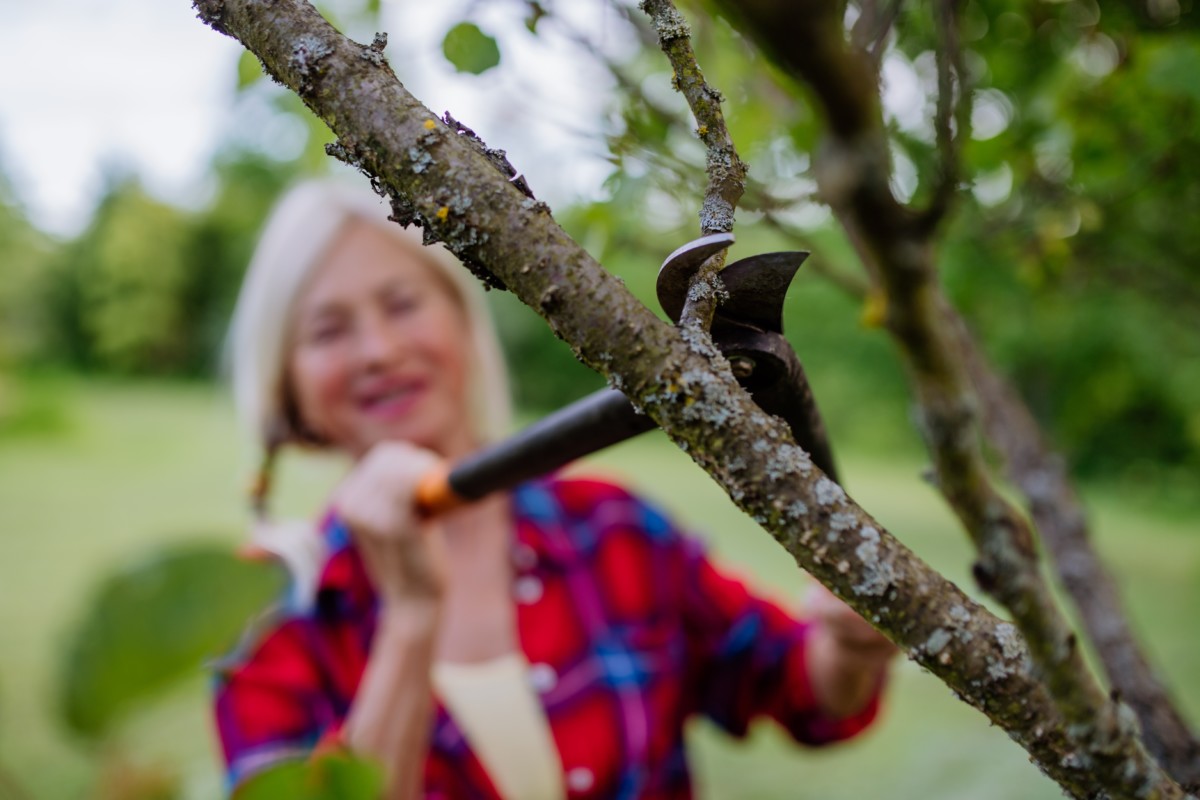
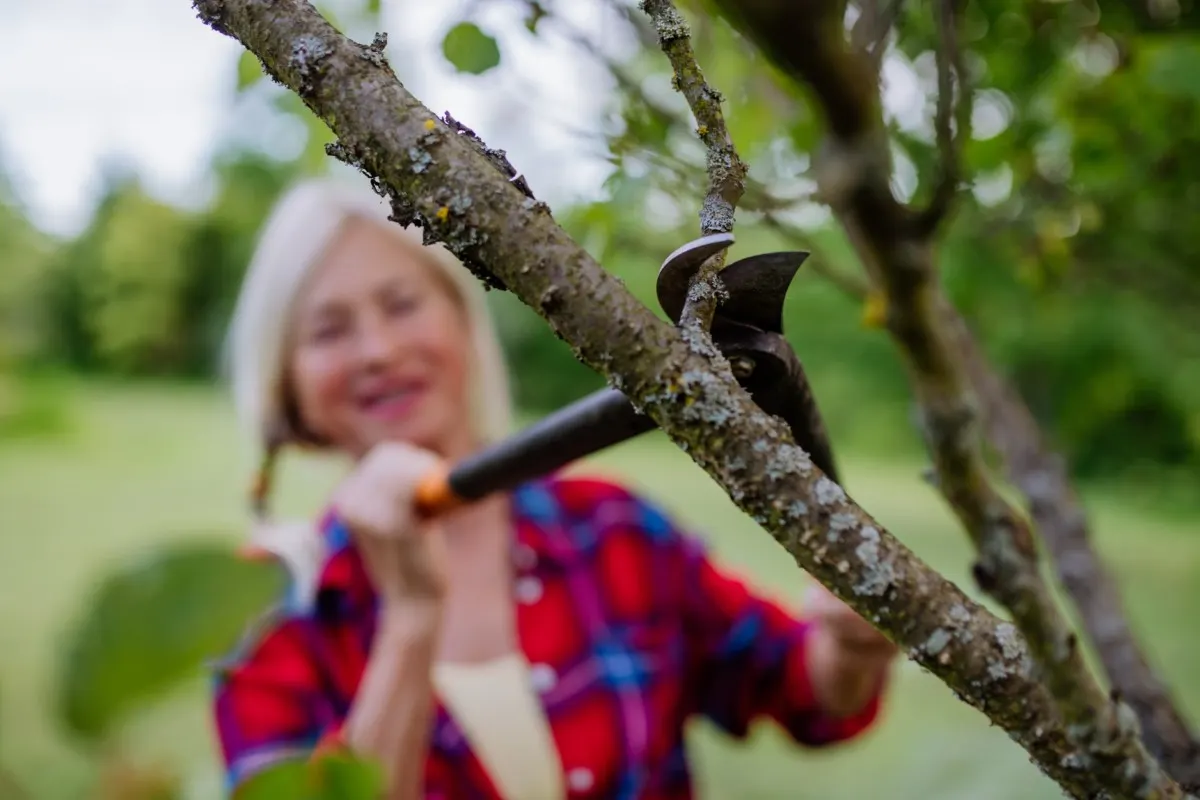
Fruit-bearing timber which are left to develop simply as nature supposed will turn out to be large over time. Though stunning, mature fruit timber with giant spreading canopies and dense crowns will shade out the solar from the decrease limbs.
Whereas unpruned fruit timber definitely have decorative worth, it comes at the price of fruit manufacturing.
If you’re eager to develop timber primarily for fruit, you have to familiarize your self with summer season pruning. This can alter the form and construction of the tree, in fact. However when finished appropriately, pruning ends in more healthy timber that can turn out to be constant and beneficiant suppliers.
Why Prune Fruit Timber in Summer season?
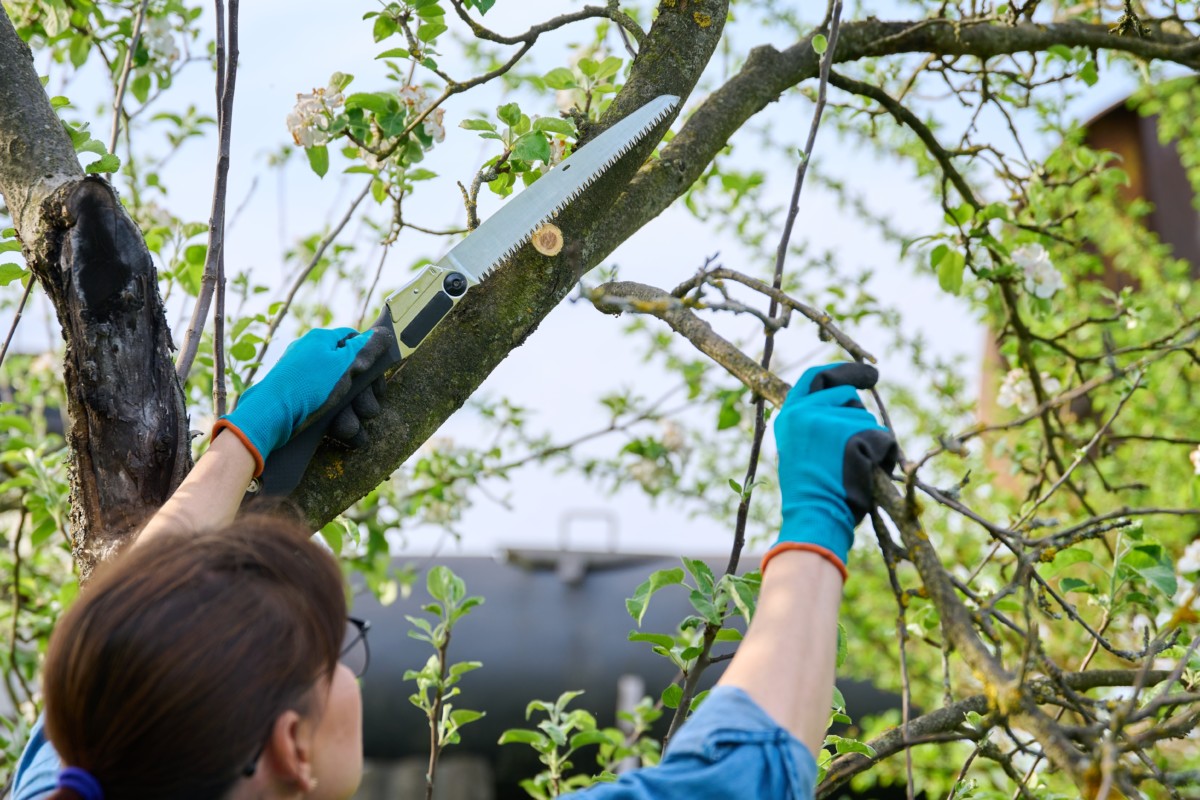
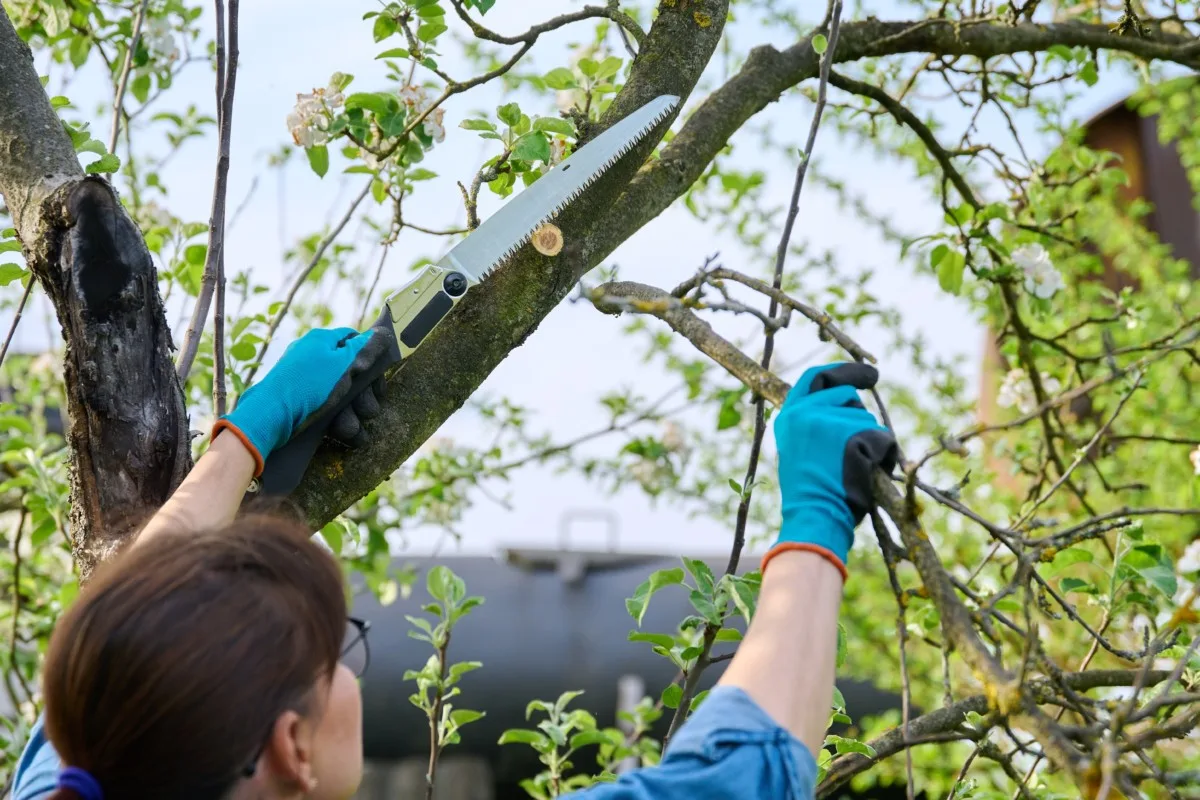
Most pruning is completed when the timber are dormant in winter, after the leaves have dropped however earlier than the buds start to kind in early spring. Winter pruning has an invigorating impact on the tree, and wherever cuts have been made, new vegetative progress will explode as soon as the rising season arrives.
However by mid-summer, we would like the timber to cease producing leafy progress and change their energies in direction of fruit set. This may be completed with a collection of strategic cuts that can promote fruit bud improvement on lateral branches, with out inadvertently inflicting extra fruitless branching.
Cut back top and management regrowth
Unpruned fruit timber can get fairly huge – peach can attain 20 ft tall and broad, apple 30 ft, and pear greater than 50 ft. As a result of the higher portion of the tree cover will obtain probably the most daylight, it is going to produce probably the most fruit – however you’d virtually want a scissor carry or cherry picker to succeed in it.
Summer season pruning retains the dimensions of fruit timber manageable and their fruits extra accessible come harvest time.
Wherever you narrow in summer season will regrow in inches; the identical reducing finished in winter would regrow in ft.
Pruning presently of yr has the best dwarfing impact on the tree. The elimination of dwell, leaf-bearing branches slows the tree’s progress, dwarfing the basis system initially after which the full measurement of the tree.
Let in additional gentle into the inside
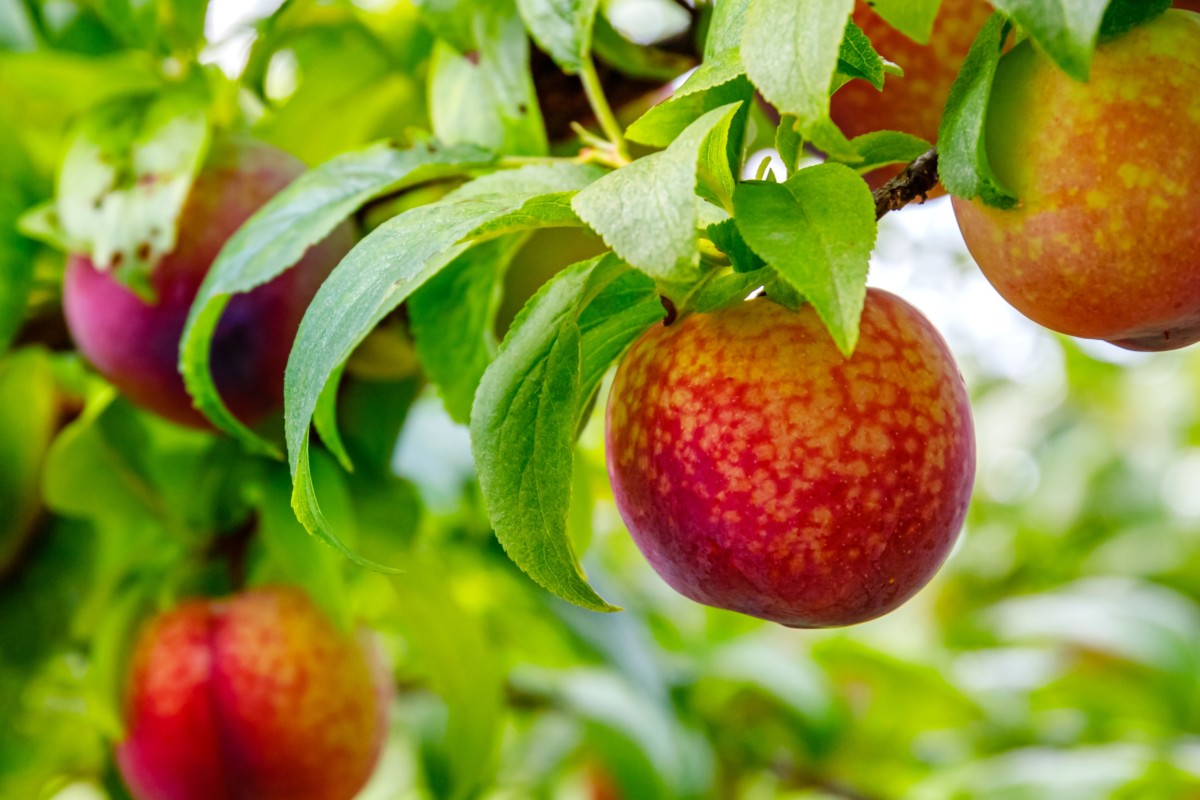
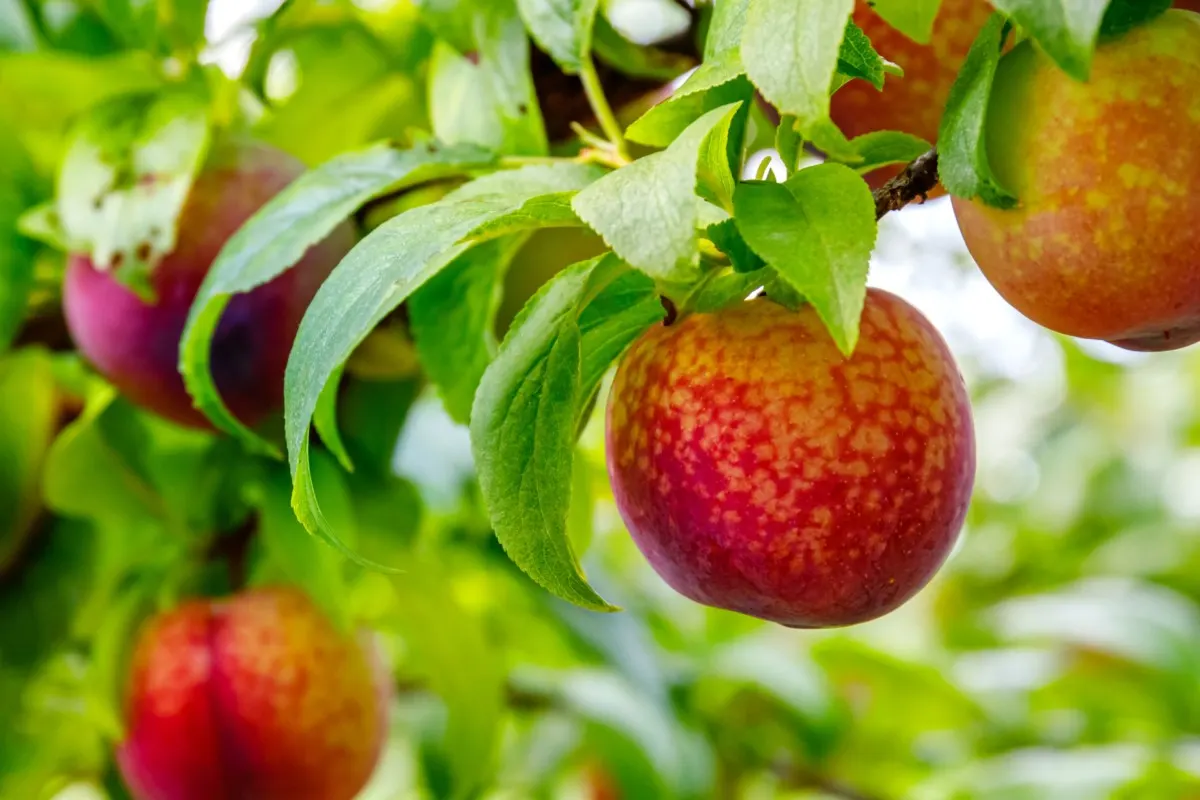
For a fruiting department to develop and preserve fruit, it might want to obtain 50% or extra of direct daylight every day.
In unpruned fruit timber, daylight will solely penetrate about 3 to 4 ft into the highest of the tree’s cover. Branches which are crowded across the central trunk shade out the sunshine, producing fruit on the high of the cover and only a few – if any – in direction of the underside.
However pruning in summer season removes and thins out the shading boughs, creating tunnels of sunshine that may attain the decrease parts of the tree.
Letting extra gentle into the cover inside will enhance the variety of fruiting branches and guarantee fruits are extra evenly distributed via the tree.
Sweeter, extra flavorful fruit
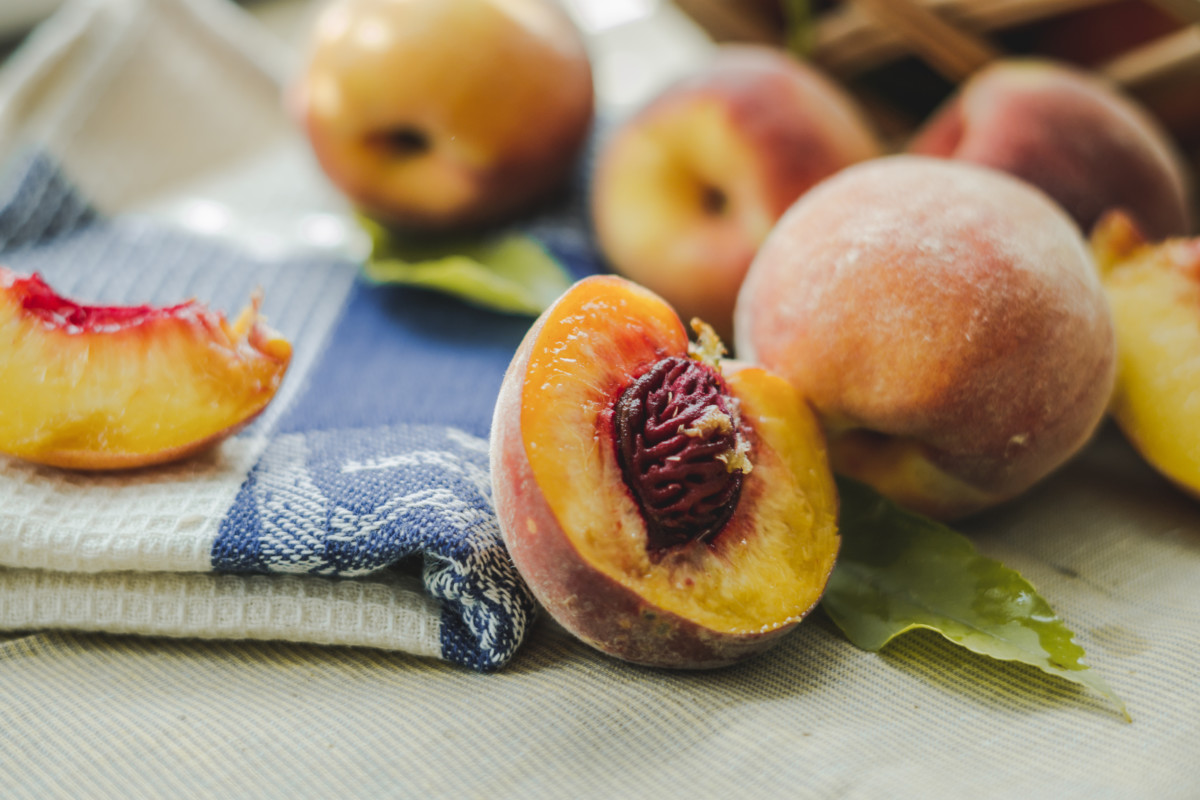
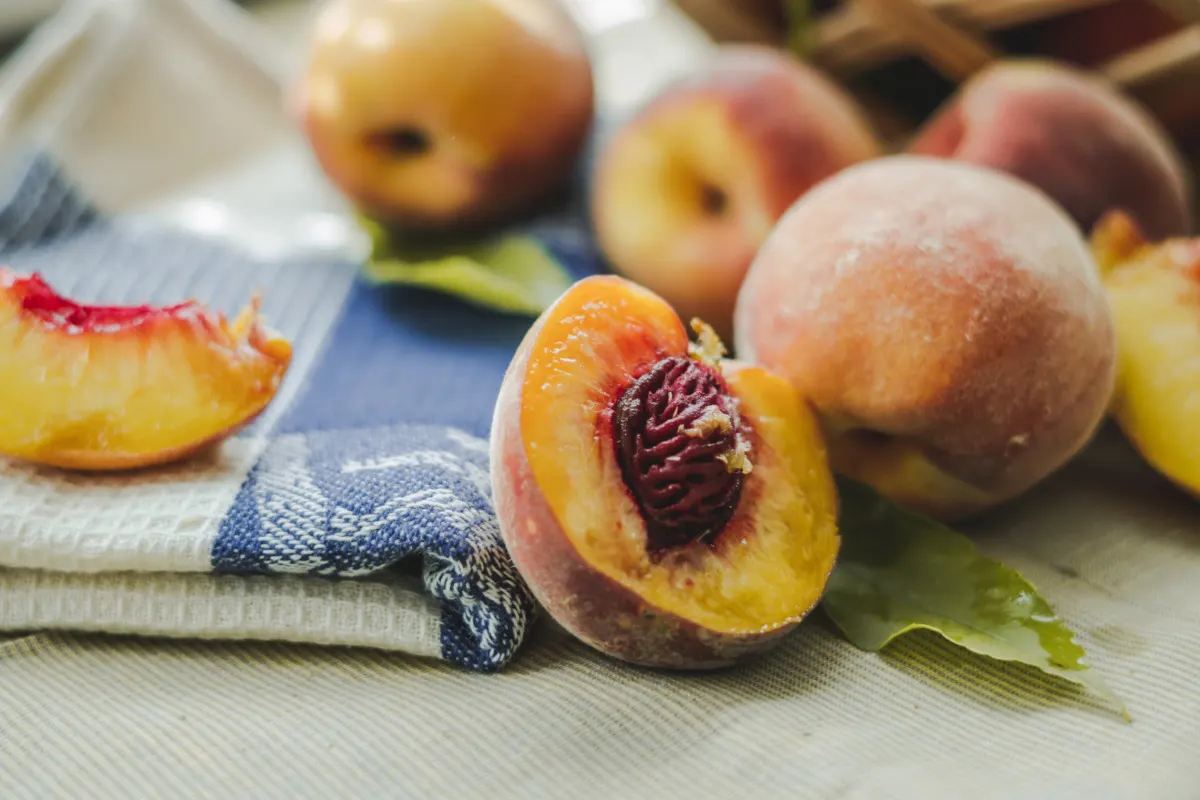
In the course of the lively progress of summer season, tree leaves bear photosynthesis and produce power within the type of carbohydrates. These carbohydrates are directed all through the tree to develop roots, shoots, leaves, and fruit.
When dwell limbs are in the reduction of over summer season, it causes the tree to react by decreasing its total progress. Its power reserves will pivot away from vegetative progress and as a substitute go towards fruiting.
With much less leafy progress to siphon up the tree’s assets, the fruits will turn out to be the principle beneficiary of its carbohydrate reserves. Extra sugars shall be out there for the fruits as they develop, making them sweeter and rather more flavorful.
Prompts higher fruit bud formation
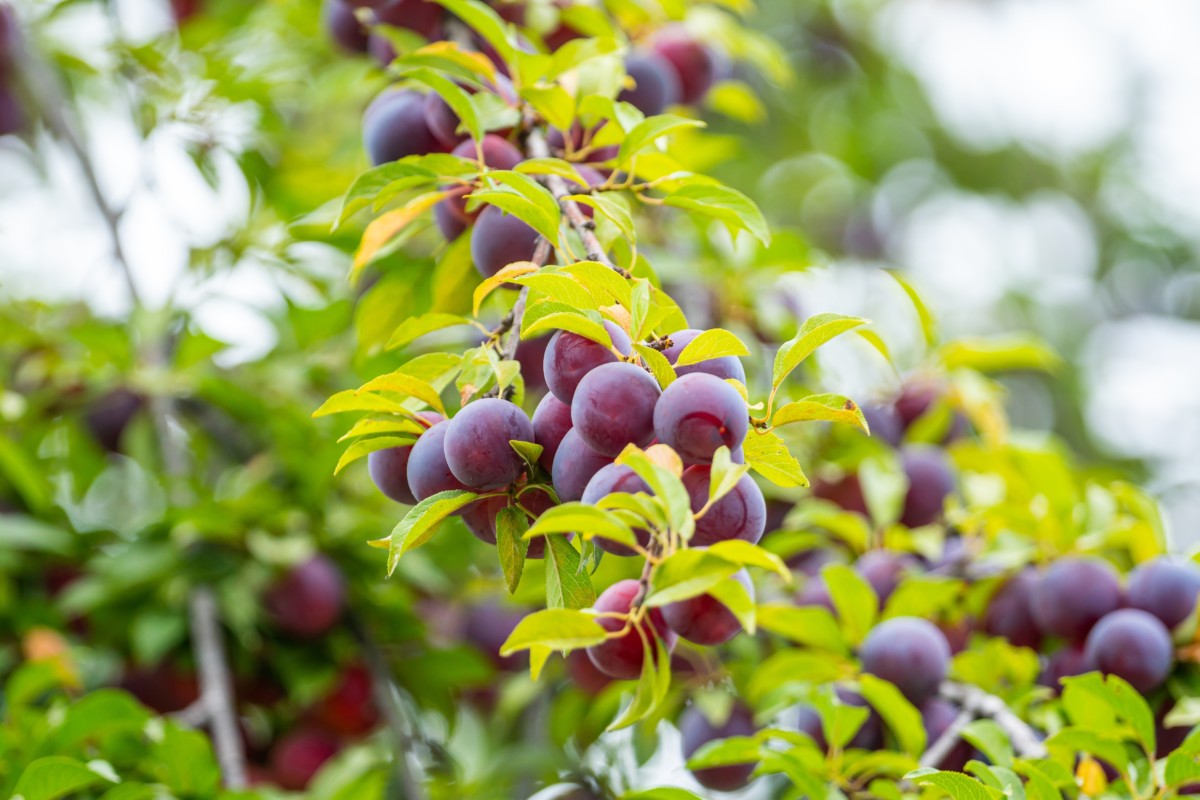
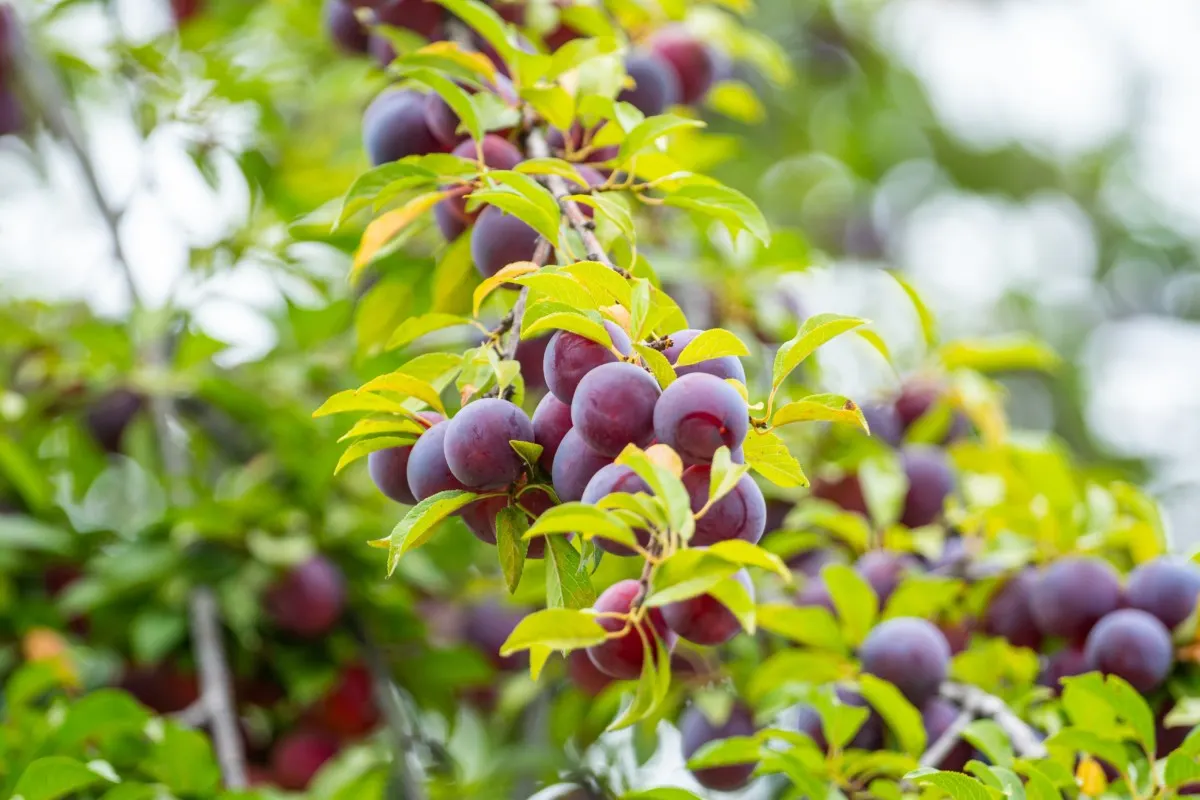
Whether or not or not a bud turns into a leaf or a flower largely is dependent upon the tree’s provide of progress hormones. Issues like auxins and gibberellins will promote leafing branches, whereas ethylene tends to set off flowering buds – particularly in apples and different pome fruits.
Ethylene is a gaseous substance that’s launched on the rising suggestions of roots, from flowers and ripening fruit, in addition to broken plant tissues.
And so, pruning and trimming again lateral branches in summer season quickly releases ethylene from each spot that was minimize. Because the ethylene gasoline is launched, it rises and saturates the tree cover.
Though the precise mechanisms behind it are nonetheless unknown, it’s thought that flooding the tree with ethylene on this method causes extra flower buds to develop all through the crown.
Develop a stronger tree
Each time you “head again” a department – that’s, shorten its size with out eradicating the limb fully – it is going to develop again stronger.
Because the lopped off ends of fruit-bearing boughs begin to regrow, the department will thicken within the course of.
Tree branches which have been trimmed in summer season are higher in a position to bear the load of the fruit, making the limb far much less prone to sag all the way down to the bottom or snap off the tree fully.
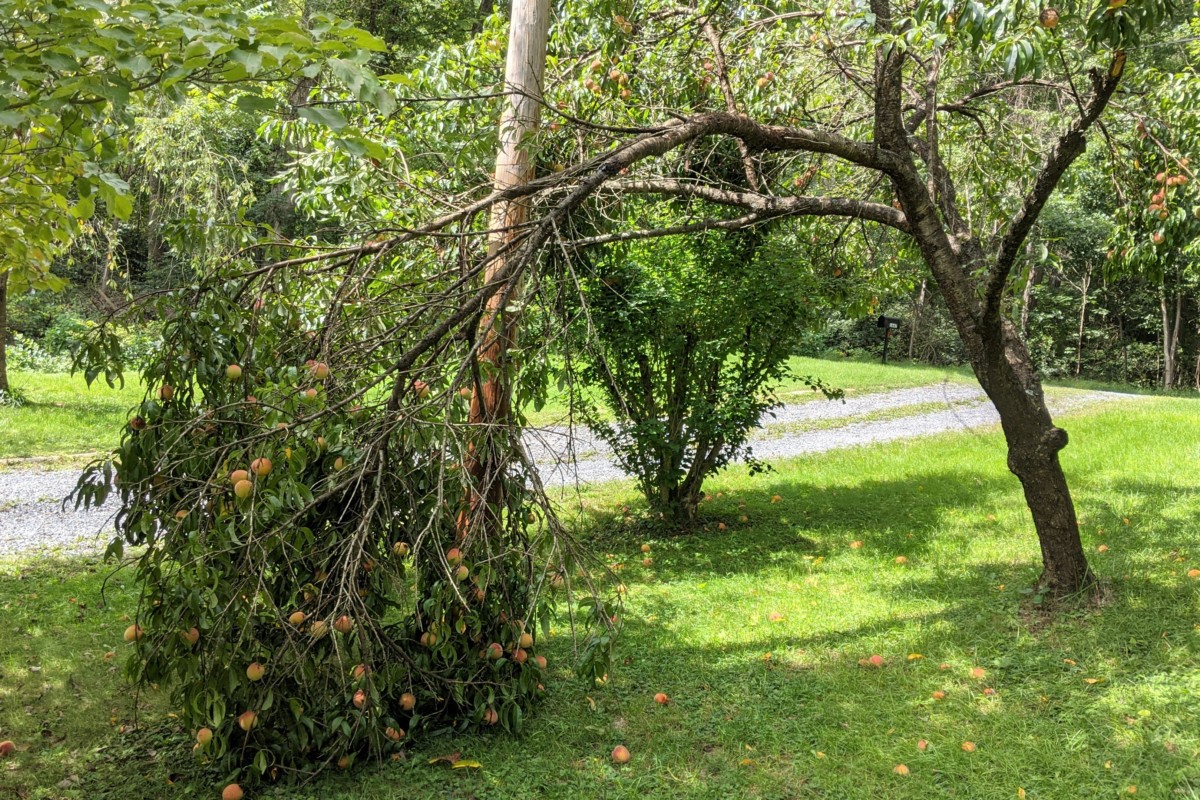
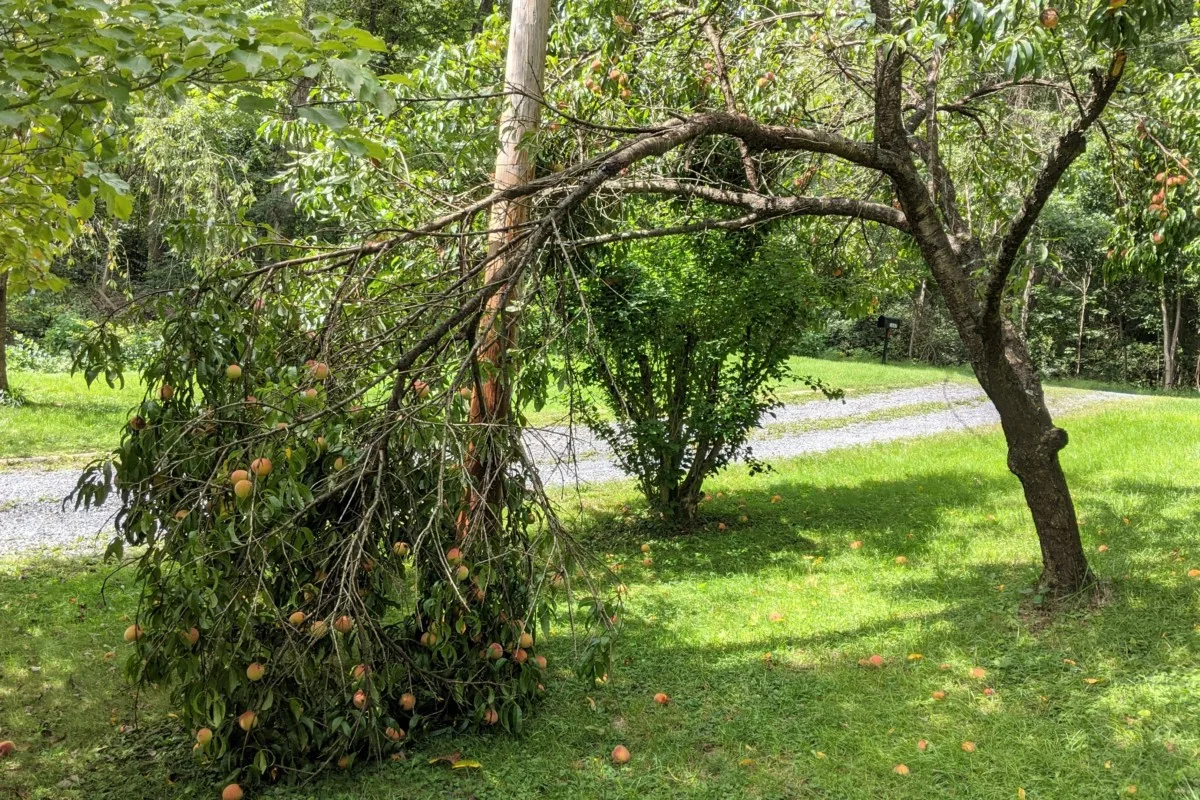
8 Ideas for Pruning Fruit Timber in Summer season
1. Get the Timing Down
Summer season pruning is greatest completed in mid to late summer season. This may be anyplace from July to September, relying on the place you reside.
You’ll understand it’s time to summer season prune when nearly all of department suggestions have set a terminal bud.
All through spring and early summer season, when your fruit timber are actively rising, they are going to have a bud on the tip of every department that lengthens the limb and produces leaves. When the tree has moved previous the lively progress part, it is going to develop a fats and swollen bud – oftentimes, a fruit bud – and the department will develop no extra that yr.
The terminal bud is the perfect sign that that is the right time to prune. The tree has already allotted its power for the season and any cuts you make now is not going to burst forth with extreme regrowth.
2. Use the Proper Instruments for the Job
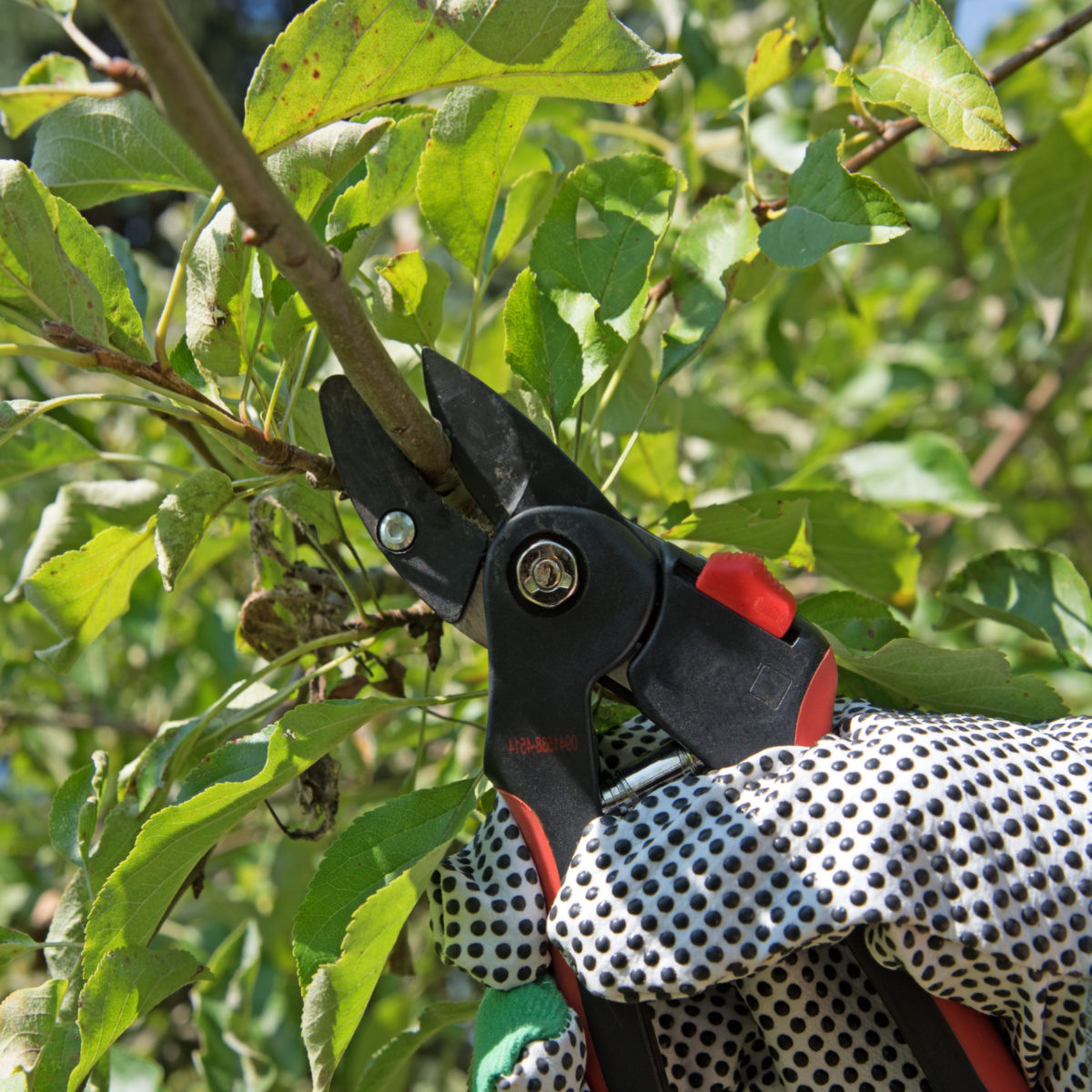
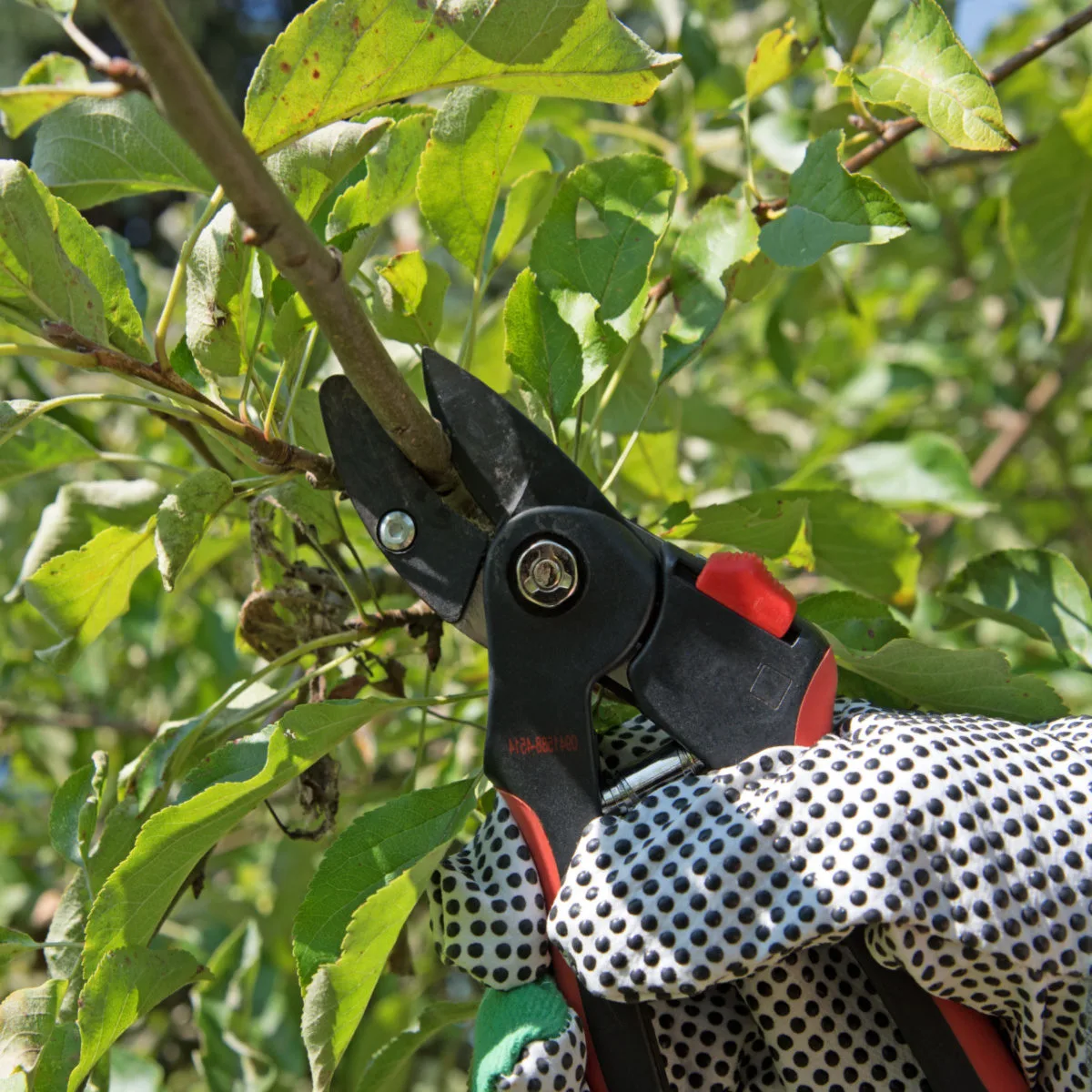
Utilizing the right pruning instruments will make the job simpler. At all times ensure that your pruners are clear and sharp earlier than attending to activity.
Bypass loppers are wonderful for snipping away dwell limbs which are 1.5 inches in diameter or much less. The scissor-like blades can get in near the place the shoot meets the department, making clear cuts in tight areas.
For shoots and branches lower than an inch in diameter, use a pair of bypass hand pruners.
In case you’re renovating a mature – however uncared for and overgrown – fruit tree, it’s greatest to rent an expert service earlier than making an attempt to prune it your self. As soon as it’s a extra manageable measurement, you possibly can take over the seasonal pruning and upkeep.
3. Make Clear Cuts
Any cuts you make ought to be clear, straight, and easy, with no ragged or torn edges.
Frayed stubs and department ends will decelerate the tree’s pure therapeutic course of. Poorly pruned spots are additionally extra vulnerable to illness and may create new entry factors for bugs.
When eradicating shoots and branches, ensure that the cuts are flush to the first department. Wooden heals most rapidly in summer season when the bark ridges across the base of eliminated branches are left intact.
Peach timber are an exception – make collar cuts as a substitute of flush cuts, leaving a brief nub again on the tree.
When pruning cuts are clear and flush, there’s no want to decorate or seal the injuries.
4. Take away All Lifeless Branches, Suckers, and Watersprouts
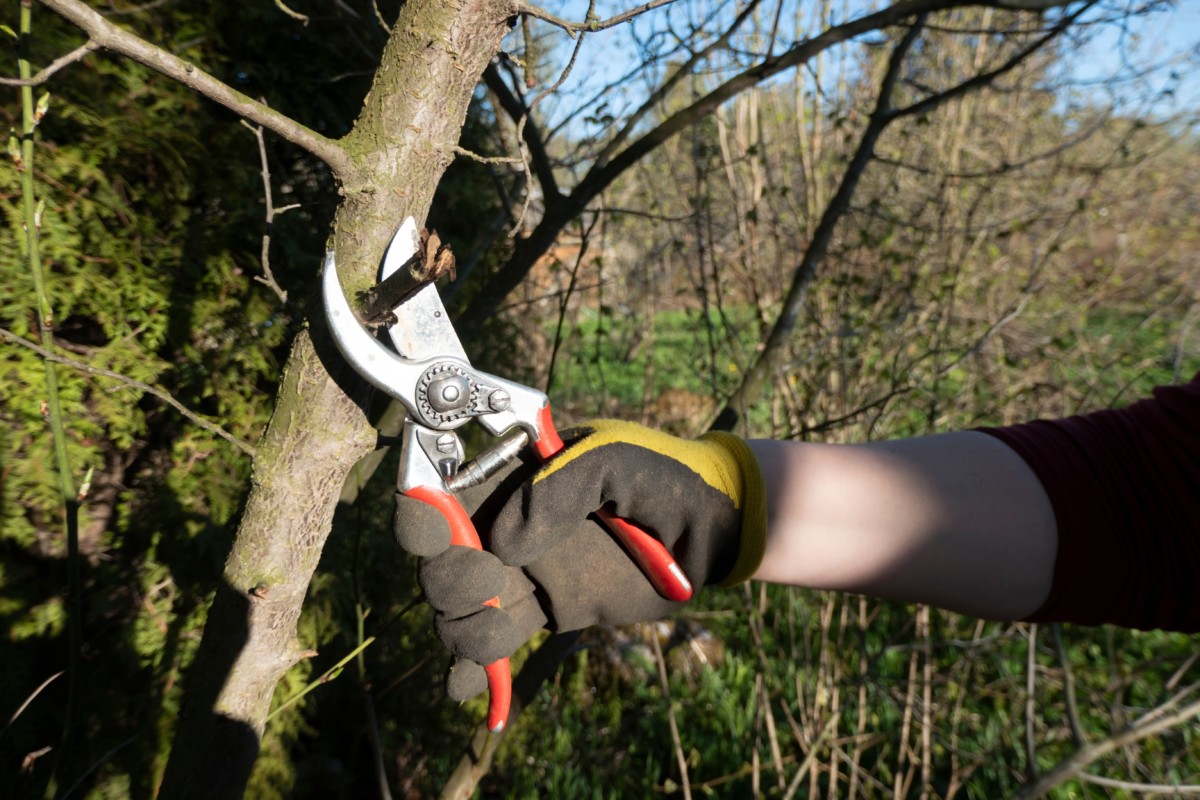
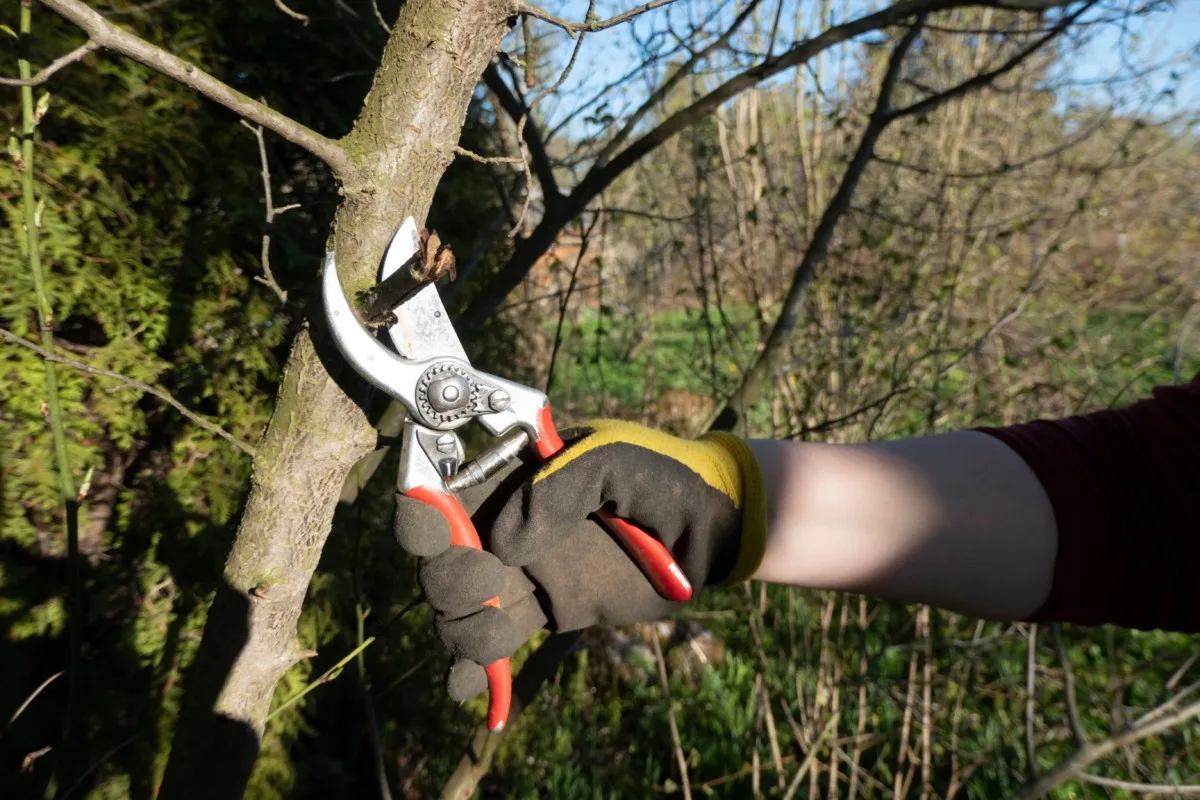
Start summer season pruning by reducing out all lifeless, diseased, and damaged branches. As soon as these are eliminated, it’ll be a lot simpler to see the shape and construction of your tree.
Additionally prune out suckers rising on the base of the trunk. Watersprouts – skinny and twiggy vertical progress that emerge from the trunk or bigger limbs – also needs to be snipped away.
Suckers and watersprouts are purely vegetative and take up treasured assets and house that will be higher reserved for fruit-bearing limbs.
5. Skinny Out Lateral Branches
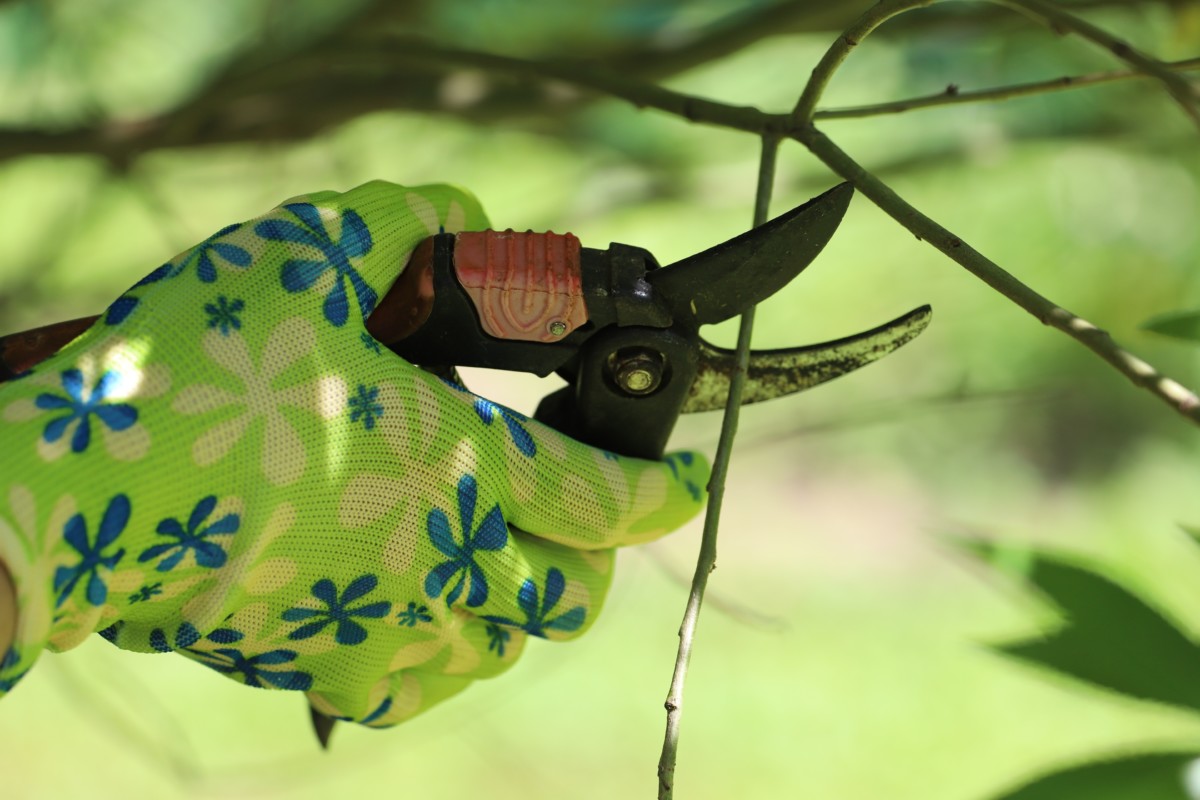
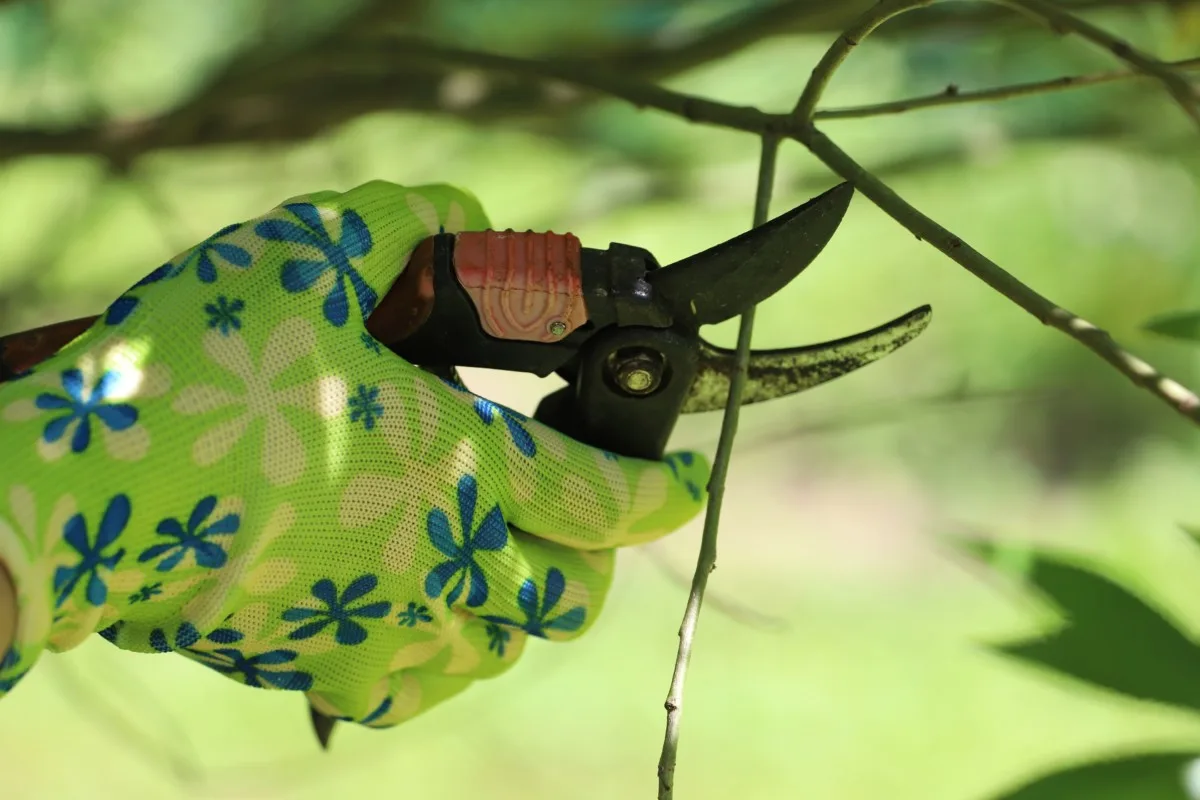
Each tree goes to be a bit completely different in form and construction. You might have a fruit tree with a central trunk and a number of other giant branches rising from it (often called a “single chief” tree). Or it might have two or extra dominant stems with quite a few limbs arrayed round them (known as a “a number of chief” tree).
No matter its form, the tree’s common anatomy would be the similar. From these bigger limbs – often called scaffolding branches – lateral branches will develop. Lateral branches are the shoots that can ultimately flower and bear fruit.
After lateral shoots emerge, they are going to kind fruit buds of their second and third yr. Within the third and fourth yr, the lateral will lastly give a harvest of fruit. As soon as a mature lateral department is delivered to bear, it turns into a perennial organ that can present for a few years.
The purpose of summer season pruning is to house the lateral branches roughly 7 to 9 inches aside alongside the scaffolding department.
That is completed by thinning – or eradicating your entire shoot from its level of origin.
When deciding on which laterals to maintain or skinny out, depart the shoots which are rising horizontally (at a 0 to 45 diploma angle) and are quick (about 8 to 9 inches lengthy) to develop on the tree.
Take away laterals which are prolonged and vigorous, as these branches typically develop too lengthy and can shade out neighboring limbs.
As soon as laterals are correctly spaced out, prepare them to develop alongside the horizontal airplane and perpendicularly to the first department. Use V-notched tree spacers or twine to assist orient the lateral shoots, adjusting them periodically as they develop.
6. Use the three Bud System
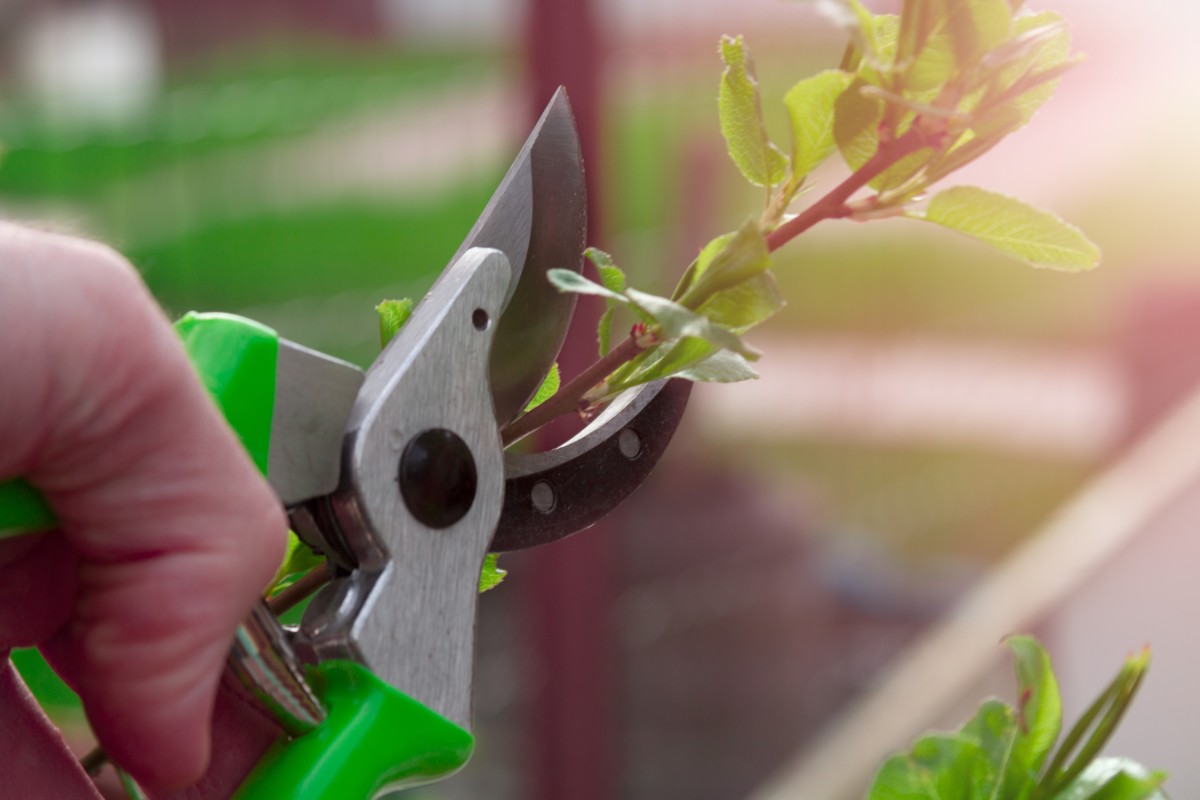
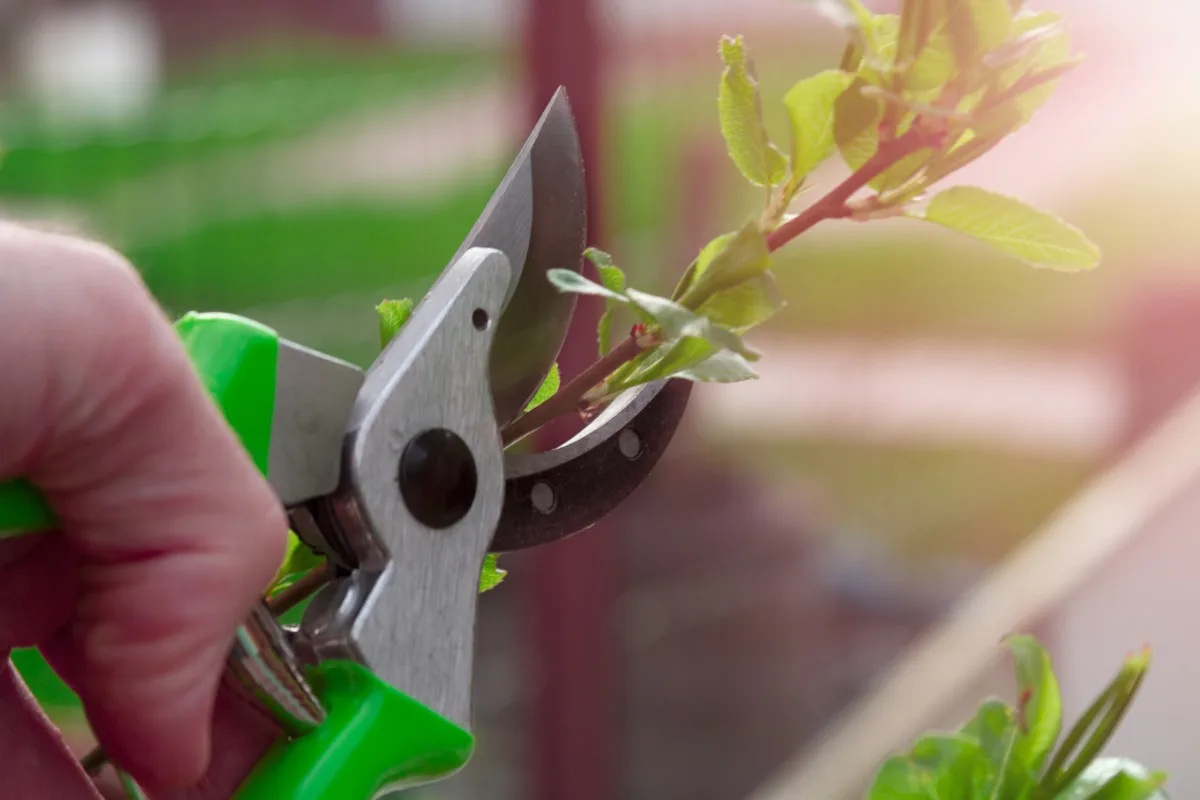
The subsequent step in summer season pruning is to make use of heading cuts to take away size from the laterals you’ve determined to maintain.
Any lateral shoots which are 8 to 9 inches lengthy are good as they’re and don’t require pruning. For the others, snipping off the rising suggestions will make for stronger and thicker branches that may assist the load of fruit with out breaking.
To find out the place to chop alongside the lateral shoot, let the three bud system information you.
Based mostly on the findings of French orchardist Louis Lorette, the three bud system entails reducing again the laterals to three buds of latest progress. The bud on the finish will proceed to regrow by a couple of inches, whereas the opposite two buds will turn out to be long-lived spurs that can yield fruit for a few years.
With the three bud system it’s even attainable to get your palms on fruit extra rapidly. Heading again laterals will typically produce absolutely fashioned fruit the next season, versus its third or fourth yr of progress.
7. Prepare Fruit Timber When They’re Younger
Maintain off on summer season pruning till your fruit timber are not less than 5 years outdated and have begun to provide fruit in earnest.
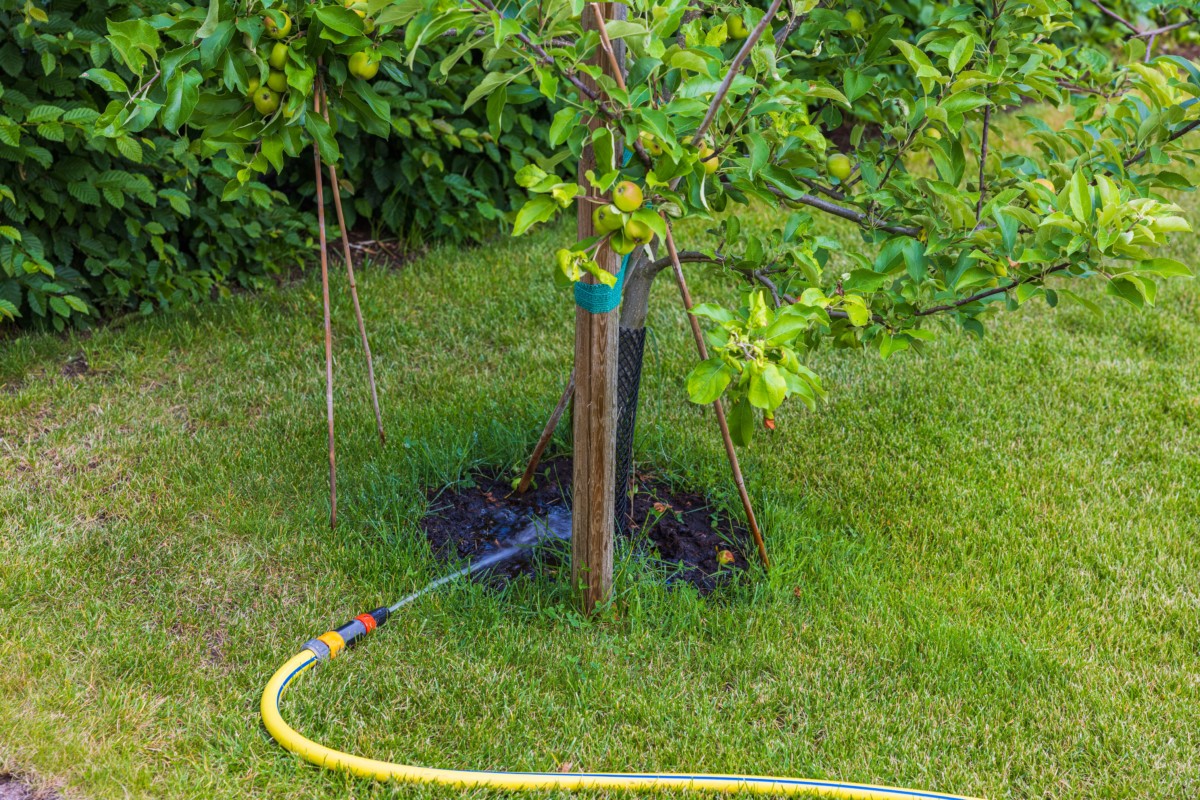
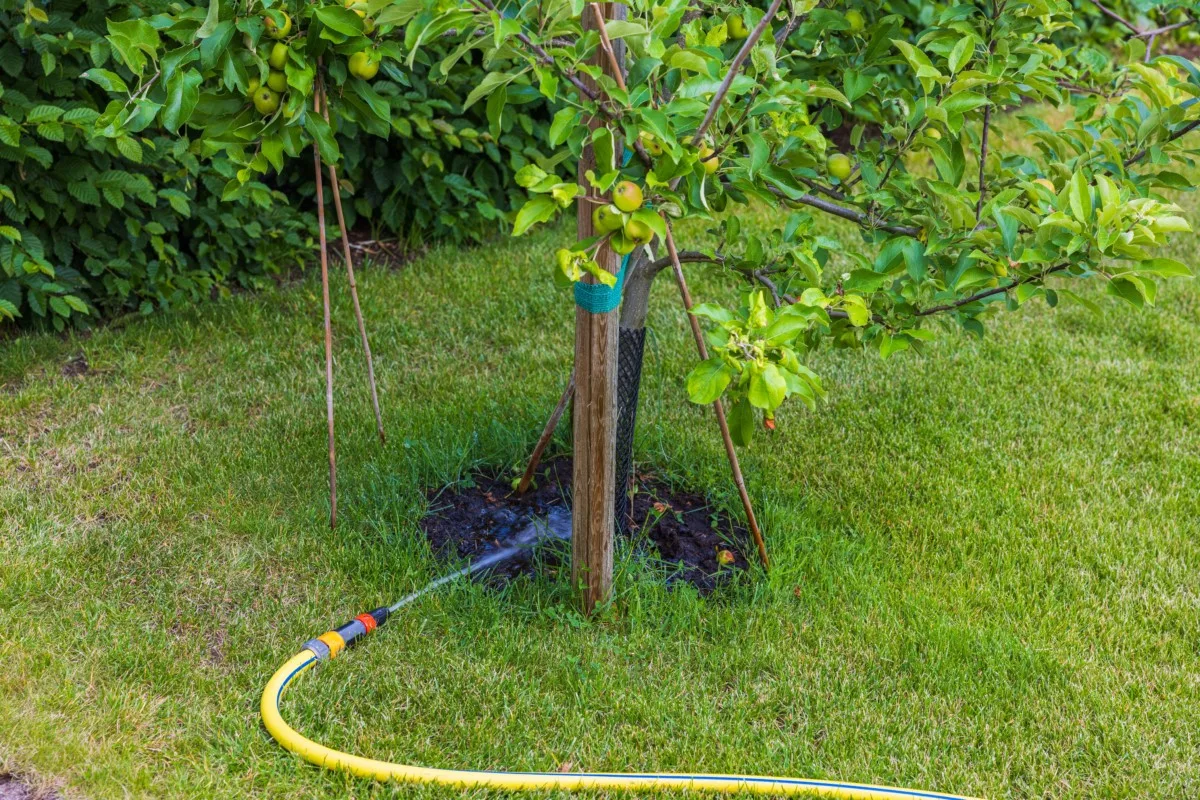
Youthful fruit timber ought to be allowed to develop vegetatively in order to put a strong basis for its later fruit-bearing years. Having about 6 to eight scaffolding branches alongside the trunk will construct beginning framework.
As youthful timber turn out to be established, they could begin producing small crops of fruit too quickly. As tempting because it may be to let the fruits develop, permitting the tree to fruit prematurely will sluggish its potential to department out and create that sturdy construction.
The twiggy branches are additionally too younger and skinny to carry heavy fruits, rising the probability they are going to bend and break. It’s greatest to take away early fruits by thinning the shoots all the way down to the first limb.
Shaping and coaching timber of their early years will maximize fruit manufacturing afterward and make upkeep pruning all the simpler.
In years 3 and 4, you can begin calmly scaling down branches and utilizing spacers or stretchers to coach them to form.
Open heart coaching is the place the scaffold limbs are organized across the trunk at about the identical top, like spokes on a wheel. Peaches, nectarines, and different stone fruits choose to develop in an open heart form.
Modified central chief coaching is the place scaffold limbs are staggered up the trunk, every going through a distinct path like a Christmas tree. Bitter cherries, apples, apricots, pears, plums, pecans, figs, walnuts, pomegranate, and persimmons shall be best on this kind.
Candy cherries haven’t any choice and can develop in abundance with both form.
8. Don’t Overlook to Skinny the Fruit
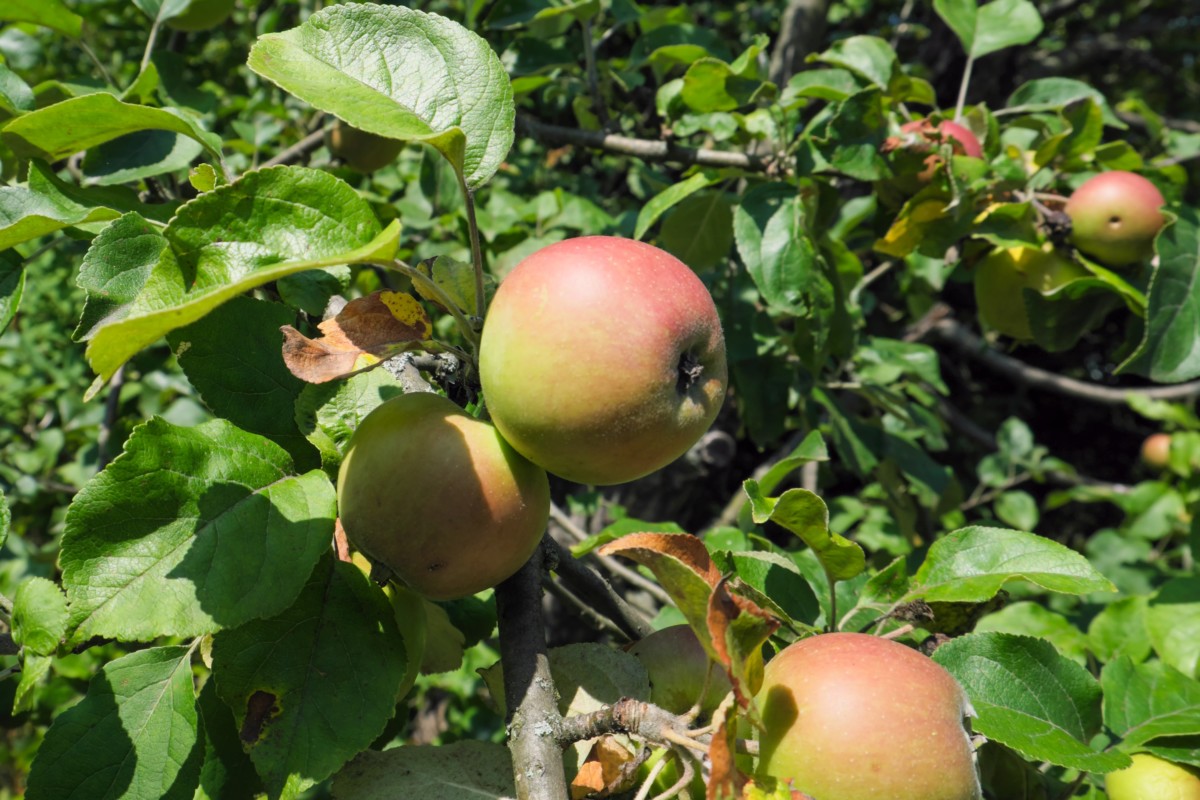
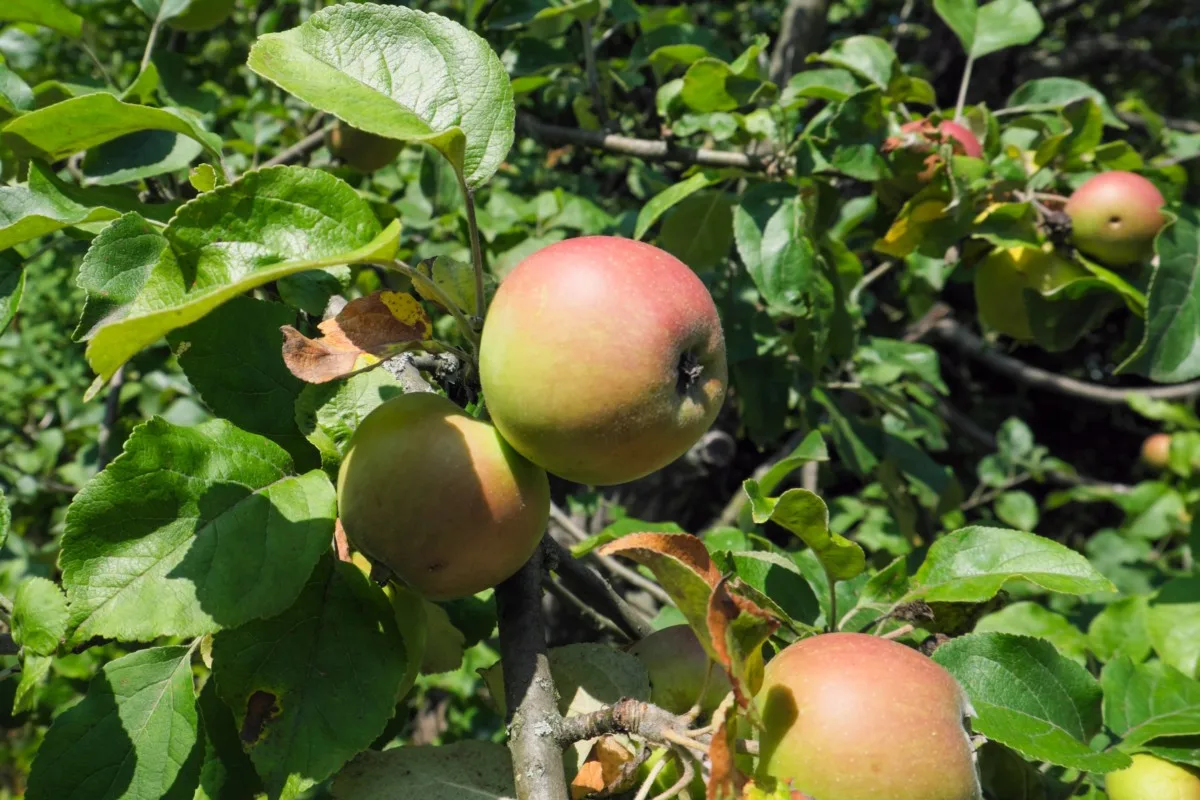
Summer season pruning is all about organising your fruit tree for fulfillment within the following seasons. Thinning, heading again, and coaching lateral branches as we speak pays in bushels tomorrow.
However for the crop coming in right here and now, scaling down the fruit may have tangible advantages for this yr’s harvest.
Fruit thinning is completed earlier within the season, after fruits have set and are a few half-inch in diameter. Pluck out fruits by hand, leaving one fruit (or cluster of fruit) each 4 to six inches down the department.
The fruits left again on the tree can now develop unhindered, receiving extra of the tree’s power and sugars. Which means giant, impossibly candy fruit at gathering time.
Eradicating fruit lightens the load on every department, resolving potential load-bearing issues too.
It additionally encourages flower bud improvement the next yr. Skinny out your fruit every season and also you’ll have persistently bountiful harvests each single autumn.

Get the well-known Rural Sprout publication delivered to your inbox.
Together with Sunday ramblings from our editor, Tracey, in addition to “What’s Up Wednesday” our roundup of what’s in season and new article updates and alerts.
